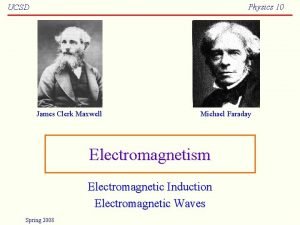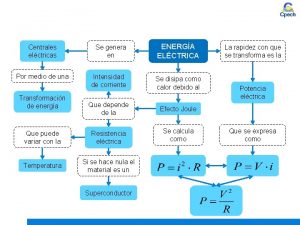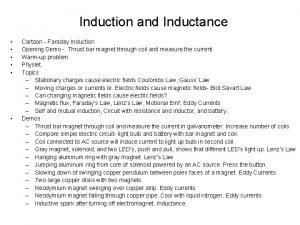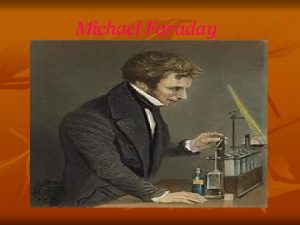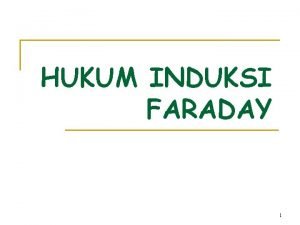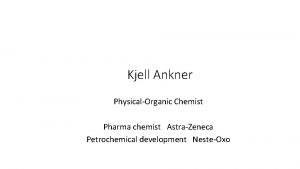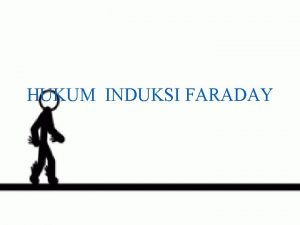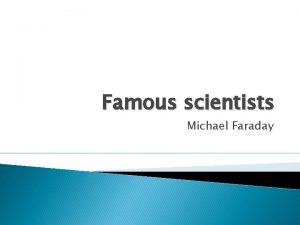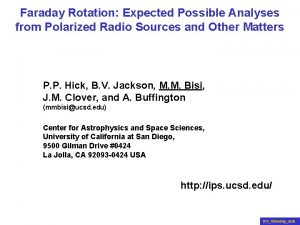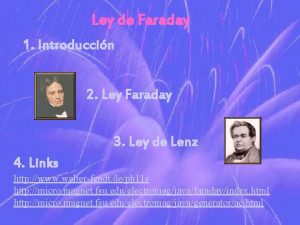MICHAEL FARADAY MICHAEL FARADAY Was an English chemist







- Slides: 7

MICHAEL FARADAY

MICHAEL FARADAY Was an English chemist and physicist (or natural philosopher, in the terminology of the time) who contributed to the fields of electromagnetism and electrochemistry.

EARLY YEARS Faraday was born in Newington Butts, now part of the London Borough of Southwark; but then a suburban part of Surrey, one mile south of London Bridge. His family was not well off. His father, James, was a member of the Glassite sect of Christianity. James Faraday moved his wife and two children to London during the winter of 1790– 1 from Outhgill in Westmorland, where he had been an apprentice to the village blacksmith. [ Michael was born the autumn of that year. The young Michael Faraday, the third of four children, having only the most basic of school educations, had to largely educate himself.

SCIENTIFIC ACHIEVEMENTS Faraday's earliest chemical work was as an assistant to Humphry Davy. He succeeded in liquefying several gases; he investigated the alloys of steel, and produced several new kinds of glass intended for optical purposes. A specimen of one of these heavy glasses afterwards became historically important as the substance in which Faraday detected the rotation of the plane of polarisation of light when the glass was placed in a magnetic field, and also as the substance that was first repelled by the poles of the magnet.

ELECTRICITY AND MAGNETISM Faraday is best known for his work with electricity and magnetism. His first recorded experiment was the construction of a voltaic pile with seven halfpence pieces, stacked together with seven disks of sheet zinc, and six pieces of paper moistened with salt water. With this pile he decomposed sulphateof magnesia (first letter to Abbott, 12 July 1812).

COMMEMORATIONS Faraday School is located on Trinity Buoy Wharf where his workshop still stands above the Chain and Buoy Store, next to London's only lighthouse. A statue of Faraday stands in Savoy Place, London, outside the Institution of Engineering and Technology. Also in London, the Michael Faraday Memorial, designed by brutalist architect Rodney Gordon and completed in 1961, is at the Elephant & Castle gyratory system, near Faraday's birthplace at Newington Butts.

Thank you for your attention, Goodbye!
